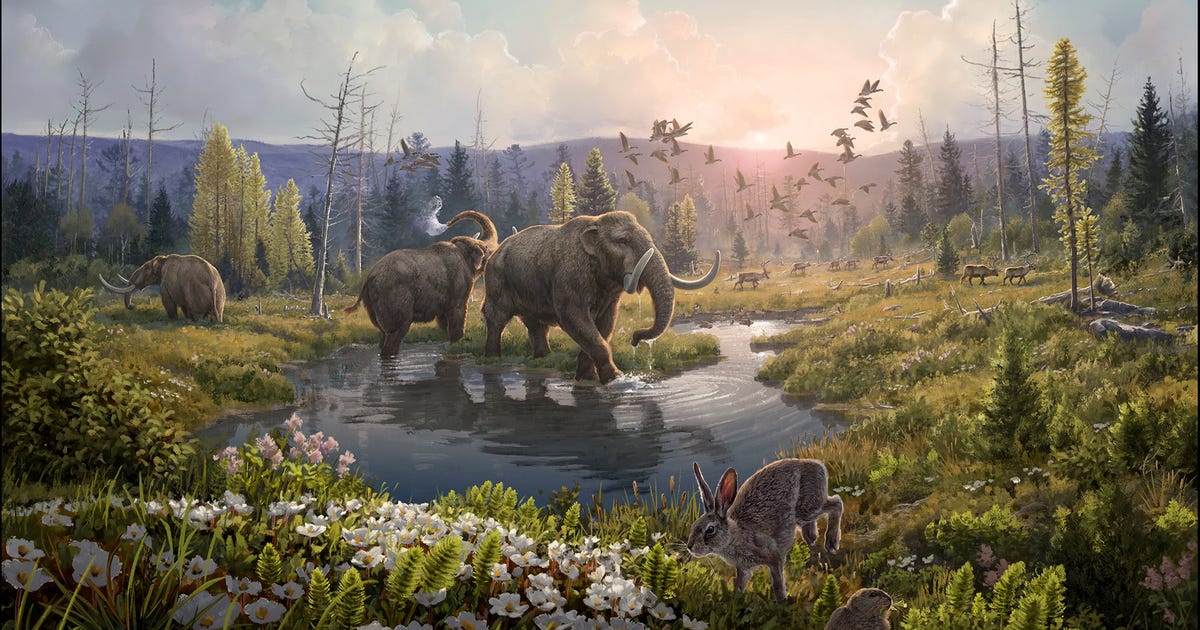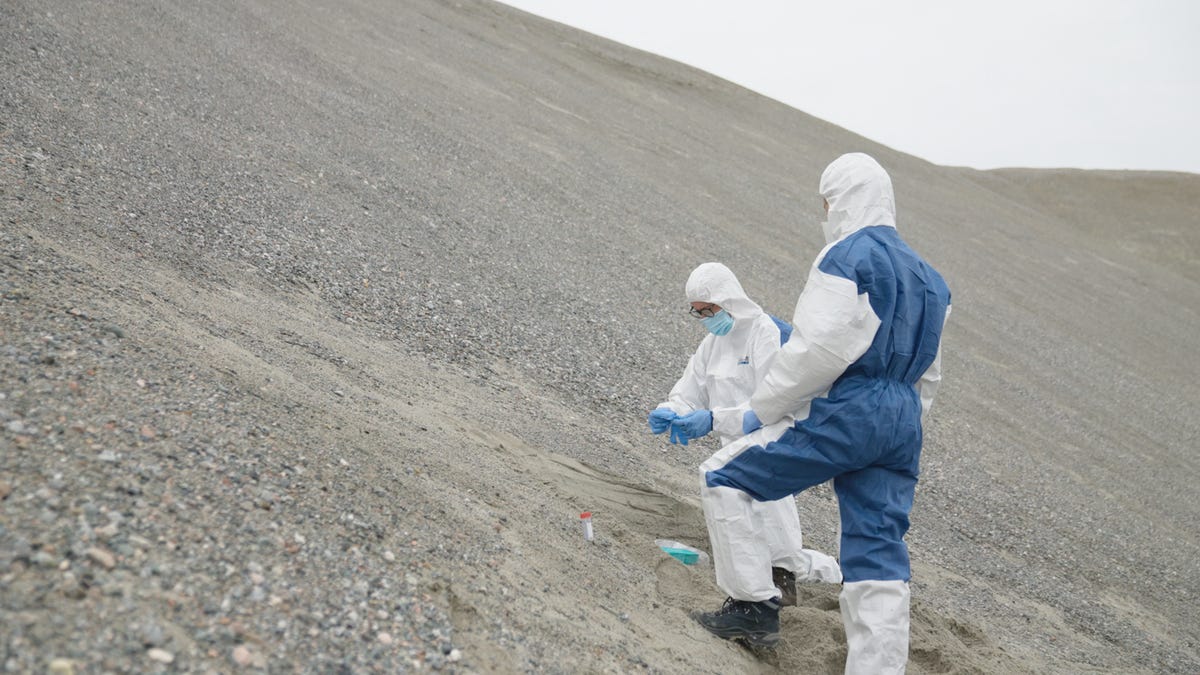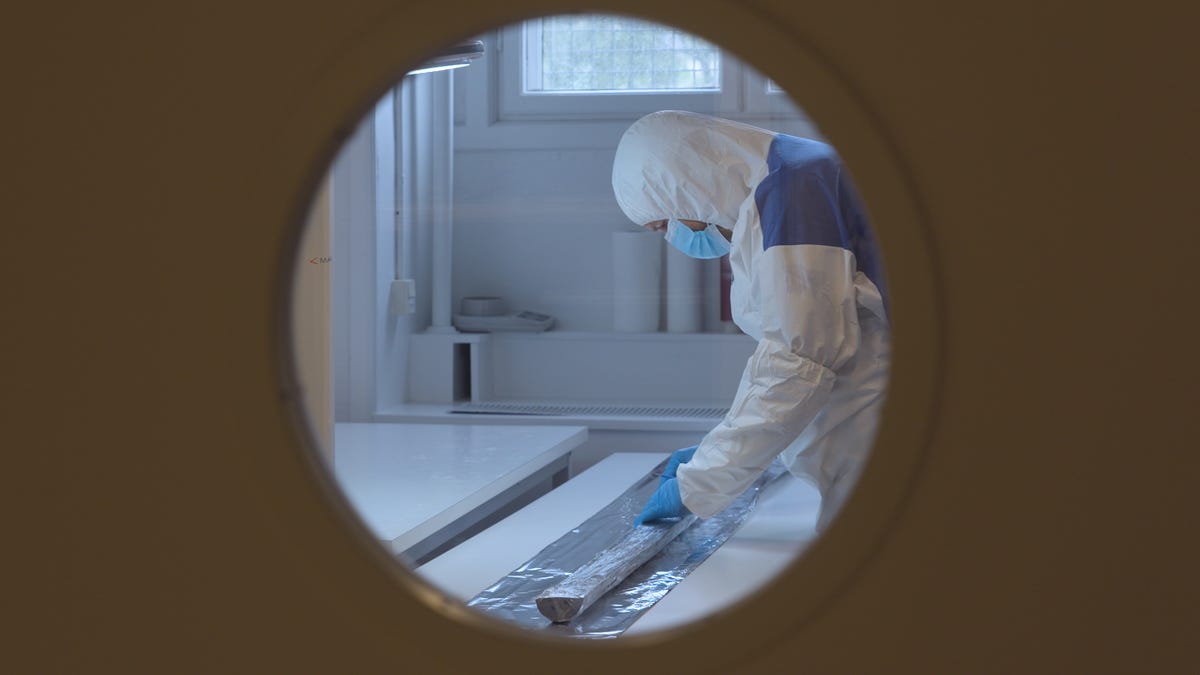
As early as 2006, Eske Willerslev and members of his lab ventured into northern Greenland with a drill, extracting cores of sediment from the Kap København Formation. They were hunting for environmental DNA, or eDNA, in their cores — puzzle pieces that could help paint a picture of the plants and animals present in the region 2 million years ago.
But for the longest time, they came up empty-handed. “Every time we had improvements in terms of DNA extraction or sequencing technology, we’d revisit these samples,” Willerslev, an evolutionary geneticist at the University of Cambridge, said in a press briefing on Tuesday.
No matter what, the researchers failed to get what they were looking for. The run of bad luck saw members of the lab turn to the occult for an explanation; they named their troubles “the curse of the Kap København Formation.”
But with steady improvements in DNA extraction and sequencing technologies, the curse was finally broken.
On Wednesday, the team published the results of their 16-year pursuit of ancient DNA in the journal Nature. They were able to sequence eDNA from 41 sediment samples, collected in 2006, 2012 and 2016 from the Kap København Formation and undisturbed by humans for 2 million years. Their analyses revealed that a lush forest replete with reindeer, hares, mastodons and a wide variety of flora once stood in what is now a dull, gray polar desert.
Willerslev, a pioneering geneticist who has previously recovered eDNA from ice cores and shown it could survive in glaciers, noted that the “breakthrough” relied on expertise, advances in genetic sequencing techniques and bioinformatics.
History in the soil
DNA, which carries the instructions for life, is not a particularly sturdy molecule. The bonds that hold it together are weak and, over time, they break down.
This is why, even though we have an abundance of dinosaur fossils, we don’t have any dinosaur DNA. The beasts died out 66 million years ago, and the DNA would simply not survive that long.
When DNA degrades, the once-long strands of information break apart into smaller and smaller pieces. It becomes almost impossible to piece these fragments back together in the right configuration, especially if they are mixed in with a lot of other DNA from the environment.

Willerslev and a colleague collecting samples in north Greenland.
Courtesy of NOVA/HHMI Tangled Bank Studios/Handful of Films
Think of DNA like a book. Let’s say Alice in Wonderland. If you have the whole book, you can understand the story. But if you’re missing a few pages, you might not understand where the White Rabbit came from or why Alice ended up at a tea party with the Mad Hatter. If you’re missing lots of pages, you probably can’t even tell what the story was to begin with. Alice? Who’s that? And why is she 10 feet tall?
That’s the problem working with ancient DNA. You might be able to retrieve small fragments of DNA but it is generally too fragmented to be able to tell where it came from — and certainly too fragmented to understand where it came from.
But under certain circumstances, DNA fragments can survive deep time.
“The ‘survival time’ of DNA in the environment is incredibly variable and strongly dependent on the environment itself,” notes Michael Knapp, an ecologist and geneticist at Otago University in New Zealand.
Previously, the oldest DNA ever recovered came from mammoth fossils found in the Siberian permafrost. In a Nature paper in 2021, researchers showed that DNA from the mammoth teeth was, potentially, about 1.6 million years old. The DNA recovered was broken up into small fragments but they weren’t degraded so much they couldn’t be pieced back together. The cold temperature of the permafrost certainly helped with this.
It’s a similar story in the new study.
Willerslev and his collaborators postulate that the long survival time of the DNA in their sediment cores was possible for two reasons. The first is the constant cold temperature of the polar desert. The second is the way the DNA is bound to minerals in the cores, preventing degradation over longer time scales. The idea is that these mineral surfaces prevent enzymes from breaking down the DNA.
Karina Sand, a geochemist at the University of Copenhagen and co-author on the paper, explained that one of the technological leaps that enabled this feat was extracting DNA from clay and quartz minerals. The latter provided an abundance of DNA, but the former was harder to extract good DNA from. Fortunately, that leaves the door open for even older DNA extraction.
“If we can get better at extracting the DNA from the clay minerals, then we think we can go further back in time with DNA,” she said.
The research team was able to extract DNA from the sediment cores and begin to read the surviving fragments. These fragments were then compared to a database of genomes (complete DNA sequences) of modern plants and animals, looking for DNA matches. Over time, they were able to fill the blank pages of history, demonstrating the thriving ecosystem of ancient Greenland.
The ancient forest of Greenland
Two million years ago, Greenland was a different place.
“The Kap København ecosystem, which has no present-day equivalent, existed at considerably higher temperatures than we have today,” noted Mikkel Pederson, a geneticist at the Lundbeck Foundation GeoGenetics Centre, in a press release.
In northern Greenland, average temperatures during this time were likely more than 11 degrees Celsius (around 20 degrees Fahrenheit) higher than they are today. Previous studies at Kap København have shown evidence it was home to a boreal forest, but the eDNA extracted and analyzed in the new study provides a complete reimagining of the area, adding in megafauna and a wide variety of plant life.
The headline mammal DNA found in the cores is undoubtedly the mastodon — which is having a bit of a moment thanks to social media. Some of the eDNA found matched to the Elephantidae family, which includes elephants, mammoths and mastodons. It seems mastodons may have roamed Greenland 2 million years ago, though the researchers note the evidence isn’t extremely strong and is based on relatively weak DNA matches.

A sediment core sample being prepared by a researcher.
Courtesy of NOVA/HHMI Tangled Bank Studios/Handful of Films
The team also found DNA related to reindeer, hares and rabbits, and the subfamily of animals that includes lemmings, voles and muskrats. Notably absent, however, is DNA from carnivores. The researchers suggest this is because of their comparably small biomass in relation to the herbivores. “It’s basically a numbers game,” Willerslev said.
One of the more intriguing DNA finds is of the Atlantic horseshoe crab. The species is no longer found at such northern latitudes, and the authors suggest this may mean Kap København experienced warmer sea surface temperatures 2 million years ago. Previous research has suggested the sea surface was warmer at higher latitudes, and the discovery of horseshoe crab DNA lends further support to this hypothesis.
Warmer temperatures are key. Multiple authors on the paper have reiterated the importance of understanding an ecosystem like this, given the effects of global warming. Two million years ago, the climate was changing and the eDNA shows that Arctic species were living with species that loved much warmer climes. This helps scientists to get an understanding of how nature was adapting to those changes and, within the DNA signatures, there may be clues to ways we could help modern-day fauna and flora survive extreme climatic swings.
One of the significant limitations of studying eDNA is that scientists have to postulate about the kinds of species that were living at the time. Knapp notes closely related ancient species might give you a DNA match but this is “somewhat inaccurate” — it provides an approximation of what existed. We may only be able to assign the DNA at a family or order level, so we can’t know exactly what roamed the boreal forest of Greenland 2 million years ago.
Even so, the recovery of DNA this old opens a new window to the prehistoric Earth, a pathway for scientists and researchers to probe the ecosystems that existed long before humans were around. The team will head to northern Canada to extract cores next year and hope to go even further back in time.
The extraction method may even lend itself to finding DNA in more humid climates across the world, like in Africa and Australia.
“If we can begin to explore ancient DNA in clay grains from Africa, we may be able to gather ground-breaking information about the origin of many different species — perhaps even new knowledge about the first humans and their ancestors,” Willerslev said in a statement.
“The possibilities are endless.”
